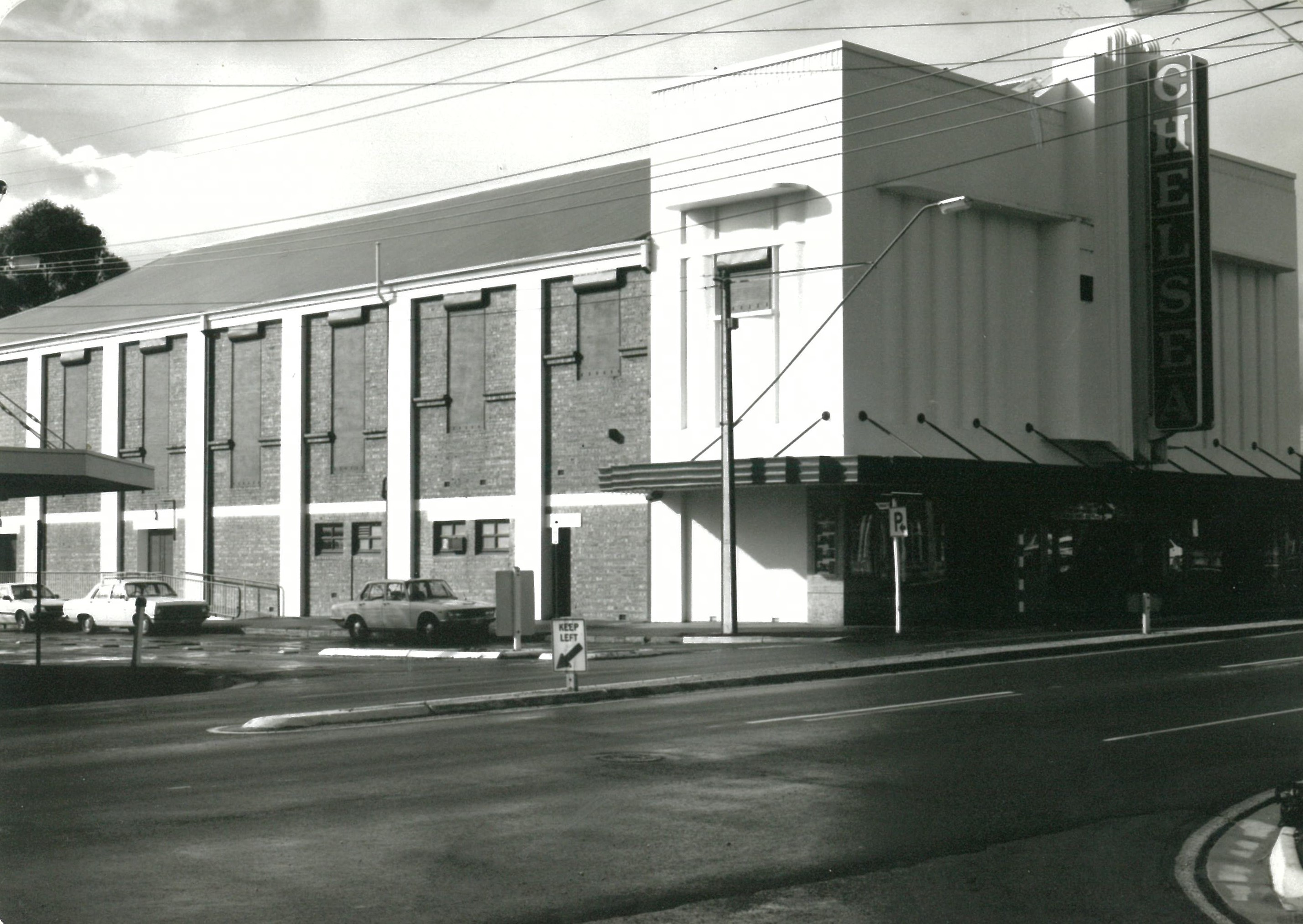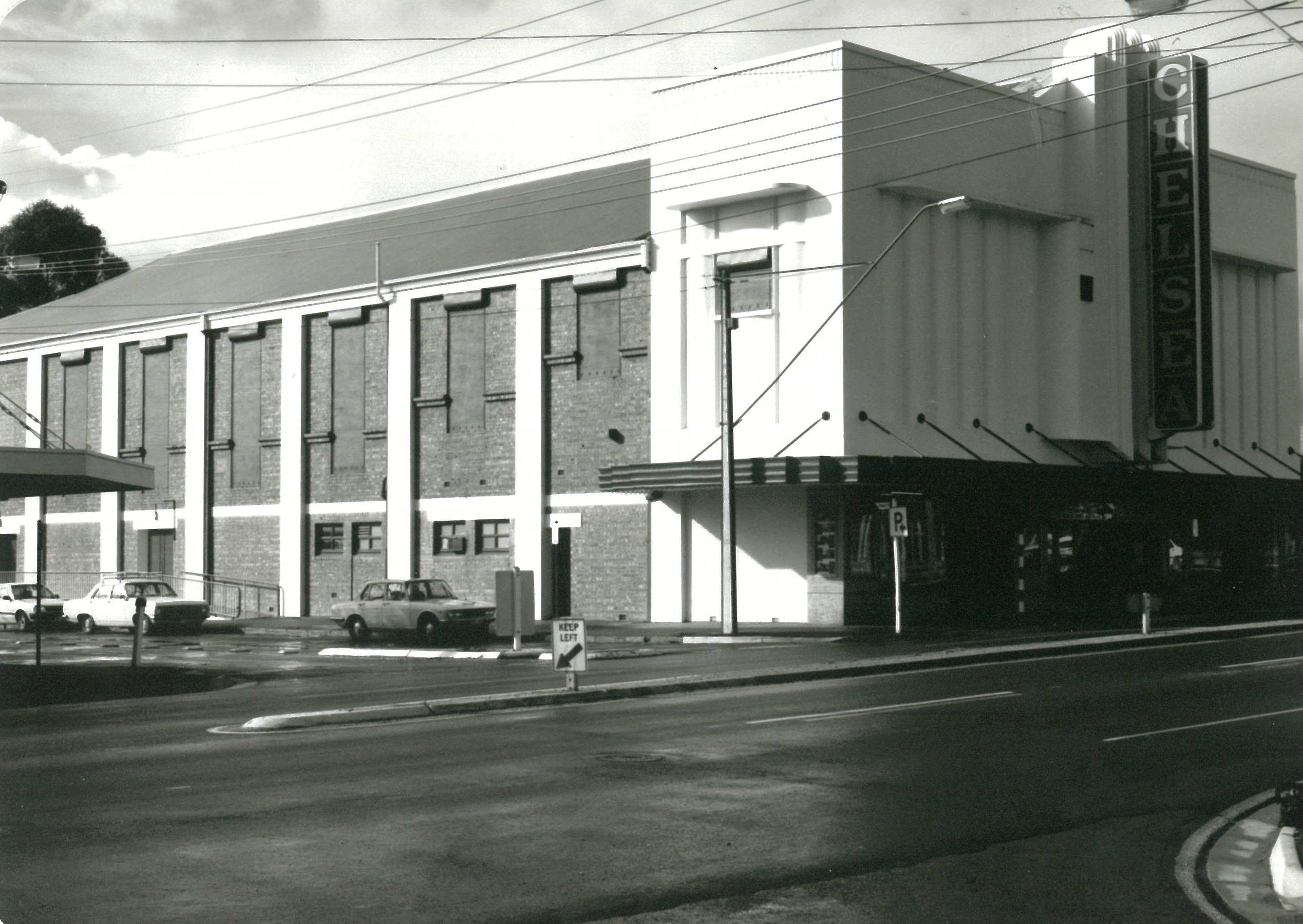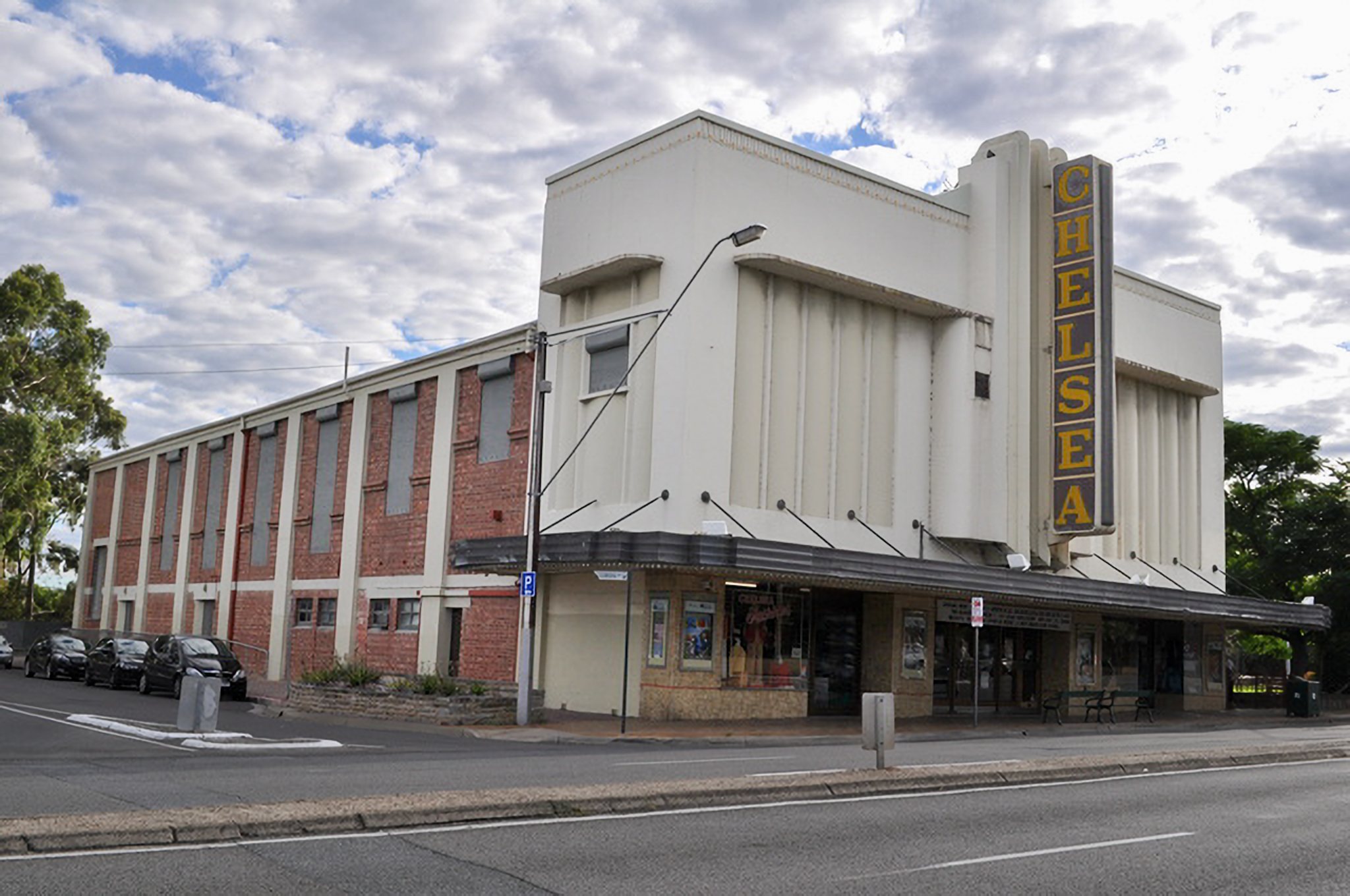FOCUS On Burnside - the news hub

Welcome.
This is our media hub of all things Burnside.
A hub for local news about people, businesses and happenings in our community.
Welcome.
This is our media hub of all things Burnside.
A hub for local news about people, businesses and happenings in our community.
-
Windback Wednesday - Pepper Street Arts Centre 30th Birthday
Share Windback Wednesday - Pepper Street Arts Centre 30th Birthday on Facebook Share Windback Wednesday - Pepper Street Arts Centre 30th Birthday on Twitter Share Windback Wednesday - Pepper Street Arts Centre 30th Birthday on Linkedin Email Windback Wednesday - Pepper Street Arts Centre 30th Birthday linkDid you know that Pepper Street Arts Centre is now 30-years-old?
In 1990 the City of Burnside purchased the old Magill School building and initially used it as a community hall. However, in 1995 Pepper Street was designated as the site of a new, Council-operated gallery and community studio. Council had identified a need for a local exhibition venue, as the only existing space for community art exhibitions at that time was the Burnside Library, which was too small for larger exhibitions.
Originally named the Pepper Street Gallery and Community Studio, the Arts Centre was officially opened by John Dowie OAM in October 1995. It originally consisted of a single exhibition space and shop in the rear section of the building, but in 2001 the Burnside Council voted unanimously to expand the Arts Centre to occupy the whole building. The shop was moved to the front of the building, leaving room for a much larger exhibition space in the back. Pepper Street Arts Centre also expanded to include Dorrit's Coffee Shop, named after prominent Magill-based artist Dorrit Black.
Photograph: Pepper Street Arts Centre c. 2006. Burnside Local History Collection.
-
Windback Wednesday - Chelsea Cinema
Share Windback Wednesday - Chelsea Cinema on Facebook Share Windback Wednesday - Chelsea Cinema on Twitter Share Windback Wednesday - Chelsea Cinema on Linkedin Email Windback Wednesday - Chelsea Cinema link
The Princess Theatre (today known as the Regal Theatre) opened in 1925. Three years later Ozone Amusements purchased the theatre following the liquidation of the previous owners, National Theatres. Hoyts purchased the theatre in 1951, before Burnside Council then purchased the theatre in 1964 to prevent it from being demolished. Hoyts continued to lease the Ozone until 1971.
It was then that a new era began for the theatre. Wallis Cinemas took over the lease for the Ozone Theatre and renamed it the Chelsea Cinema. In 1983, the Chelsea Cinema was added to the State Heritage Register for its significance "as a rare example of an Art Deco cinema and for being a notable example of an intact cinema interior representing an era when cinema-going was a major recreational activity and impressive cinema interiors were part of making a night at the pictures a memorable experience".
In 1984, Burnside Council secured a grant under the Community Employment Programme and renovated the cinema. The number of seats was reduced from 1145 to 585, and a new floor, screen, carpet and acoustic equipment were added along with a fresh coat of paint.
In 2009, the City of Burnside received enquiries as to whether it would be prepared to sell the Chelsea Cinema. A number of options were investigated, and the decision was made to run an Expression of Interest process for the sale of the site. However, strong activism from the community-run "Save the Chelsea" campaign led Council to abandon the sale process, opting instead to continue to lease the cinema to private operators.
Later that same year, the City of Burnside implemented a Conservation Management Plan for the Chelsea Cinema.
Photographs: Chelsea Cinema c.1980, Chelsea Cinema c.2000. Burnside Local History Collection.


-
Windback Wednesday - Ozone Theatre
Share Windback Wednesday - Ozone Theatre on Facebook Share Windback Wednesday - Ozone Theatre on Twitter Share Windback Wednesday - Ozone Theatre on Linkedin Email Windback Wednesday - Ozone Theatre link
The Princess Theatre (today known as the Regal Theatre) opened in 1925. Three years later Ozone Amusements purchased the theatre following the liquidation of the previous owners, National Theatres. The theatre was renamed the Marryatville Ozone and adapted for "talkies", though it remained silent film capable.
In 1941 the Ozone Theatre underwent a major redevelopment. The firm F. Kenneth Milne Architects undertook the upgrade, transforming the theatre "beyond all recognition" into the classic Art Deco style which has been maintained to this day. The renovations were undertaken in stages, ensuring the Ozone remained open for film screenings throughout.
Hoyts Group purchased the theatre in 1951, but kept the name Ozone. In 1955 the original screen was removed, and a new wider proscenium was placed in front. CinemaScope (an anamorphic lens for widescreen movies) was also installed.
By the early 1960s, many local cinemas were experiencing financial struggles. Rumours began to surface that the Marryatville Ozone would be purchased by Amoco Petrol Company and replaced with a petrol station. In 1964, following a public campaign, Burnside Council purchased the theatre to save it from demolition and leased it back to the Hoyts cinema chain. Hoyts maintained the lease until 1971.
Photographs: Ozone Art Deco interior c.1941, Ozone exterior c.1970 and Hoyts Ozone snack bar c.1970. Burnside Local History Collection.



-
Windback Wednesday - Princess Theatre
Share Windback Wednesday - Princess Theatre on Facebook Share Windback Wednesday - Princess Theatre on Twitter Share Windback Wednesday - Princess Theatre on Linkedin Email Windback Wednesday - Princess Theatre link
The Princess Theatre, today known as the Regal Theatre, was designed by South Australian architect Chris A. Smith and officially opened by Burnside Council Chairman J.A. Harper on 24 November 1925. Opening night featured the silent film Little Annie Rooney, starring Mary Pickford, and a performance by Miss Elsa Lewis, the whistling violinist.
The Princess Theatre was owned by National Theatres, whose slogan was "pictures for the people owned by the people". As "talkies" hadn't been invented yet, the Princess Theatre was only outfitted for silent films and pantomimes. All supporting music and sound-effects were provided by the Princess Theatre Orchestra, who were seated in a purpose-built orchestra pit below the main screen.
National Theatres liquidated in 1928 and its circuit of theatres, including the Princess Theatre, were taken over by Ozone Amusements Limited.
On Sunday 9 November the City of Burnside will celebrate the Regal Theatre's 100th anniversary, featuring a live performance by the Atlantic Street Band and a screening of The Great Gatsby (2013). Find out more and book your tickets now at https://www.burnside.sa.gov.au/Whats-On/Public-Events/Regal-Theatre-turns-100
Photograph: Interior of the Princess Theatre in 1925, courtesy of the Smith Family and Colin Flint. Burnside Local History Collection.

-
Discover Nature in Burnside with iNaturalist
Share Discover Nature in Burnside with iNaturalist on Facebook Share Discover Nature in Burnside with iNaturalist on Twitter Share Discover Nature in Burnside with iNaturalist on Linkedin Email Discover Nature in Burnside with iNaturalist link
Have you ever spotted a curious insect in your garden or an unfamiliar flower on a walk through Michael Perry Bontanic Reserve and wondered what it was? With the iNaturalist platform, you can find out in just a few taps.
iNaturalist is a free platform that lets you photograph plants, animals, fungi and insects, upload your sightings, and get help identifying them from a community of experts and enthusiasts around the world. It’s like having a field guide in your pocket.
For people living in Burnside, iNaturalist is more than just a fun way to satisfy curiosity. Each observation you share adds to a global biodiversity database, which helps build a clearer picture of the plants and wildlife thriving in our parks, gardens, and reserves. Over 1,900 species have currently been recorded in the city on the iNaturalist platform. This information provides Council and the community with data on the plants, wildlife and fungi in the area, including uncommon and threatened species and can be used to support conservation projects and guide efforts to protect local habitats. It’s also a great educational tool for families, schools, and community groups.
Species are identified in two ways. First, iNaturalist compares photographs of nearby observations to identify species. Second, people who are part of the online iNaturalist community, many of them highly experienced at identifying plants and animals, add identifications to the observations.
These experts includes City of Burnside staff who you can follow on iNaturalist to see what they’re discovering in our local reserves and streetscapes. By keeping up with their observations, you’ll get a behind-the-scenes look at the plants and animals that catch our team’s attention and learn more about the biodiversity right on our doorstep.
Environmental Sustainability Manager – Dr Philip Roetman
By using iNaturalist, you’re not only learning more about the environment around you – you’re also helping tell Burnside’s unique ecological story. So next time you see something unusual on your walk, snap a photo, share it on iNaturalist, and join a global community of citizen scientists.
You can see observations made in the City of Burnside, here: www.inaturalist.org/projects/city-of-burnside-south-australia
-
Windback Wednesday - Seymour College
Share Windback Wednesday - Seymour College on Facebook Share Windback Wednesday - Seymour College on Twitter Share Windback Wednesday - Seymour College on Linkedin Email Windback Wednesday - Seymour College link
The Presbyterian Girls' College at Glen Osmond was founded in June 1921, when it was endorsed by the State Assembly of the Presbyterian Church. After careful consideration, the site for the school was selected as "Wooton Lea", the old estate of Mr F.H. Faulding. When purchased by the school, Wooton Lea consisted of 20 acres of land, four small cottages and a 25-room house now known as Barr Smith House. Over the years the school has added a number of new buildings, though these original structures still remains.
The school was officially opened by Lady Duncan on 15 February 1922, with 105 students under the care of eight staff.
In 1927, the Principal Miss I.J. Macdonald introduced the school's "clan" system to foster a sense of teamwork and loyalty amongst students. The four Clans are named Bruce, Douglas, Stewart and Cameron (previously Wallace 1927-1929), after significant figures in Scottish history, and they have a long history of healthy competition on school Sports Days.
In 1976, Presbyterian Girls' College was renamed to Seymour College to honour one of the school's founders and original Chairman, Reverend Dr J.A. Seymour.
Photographs: Opening of a new wooden classroom, Presbyterian Girls’ College 1923, Courtesy of the State Library of South Australia (PRG 280/1/38/207), and Presbyterian Girls’ College Sports Day 1941, Courtesy of the SLSA (B 7798/255).


-
Windback Wednesday - Kensington Oval
Share Windback Wednesday - Kensington Oval on Facebook Share Windback Wednesday - Kensington Oval on Twitter Share Windback Wednesday - Kensington Oval on Linkedin Email Windback Wednesday - Kensington Oval linkDid you know that this year marks the 150th anniversary of Kensington Oval?
When the land which makes up Kensington Park was subdivided for development in the 1870s, a group of young men (members of the now disbanded Kensington Football Club) purchased a number of allotments for use as a public recreation reserve.
Over the following years, investors and community members worked to raise funds, level and grade the earth, plant grass and over 200 trees. Kensington Oval was officially opened for use on Saturday 10 July 1875 and the occasion was celebrated with a football match attended by over 800 spectators. Following the collapse of the Commercial Bank in 1886, the Oval's trustees could no longer cover the mortgage payments, and the City of Burnside took over maintenance of the oval to prevent it from being sold and subdivided into housing.
Kensington Oval, later Olympic Sports Field (1965 - 1997), has been home to Kensington Districts Cricket Club, Norwood Football Club, West Adelaide Football Club, Athletics South Australia and Adelaide City Football Club, and hosted such storied athletes as Sir Donald Bradman and Cathy Freeman. In 1967, the Olympic Sports Field even hosted a friendly game between South Australia's best and a star-studded Manchester United, which had just won the English Football League for the seventh time.
This year the City of Burnside is collaborating with the South Australian Athletic League to celebrate this amazing oval's history. In advance of this event, we are calling on you to share your own stories and photographs of Kensington Oval/Olympic Sports Field. You can email historicalculturalofficer@burnside.sa.gov.au with your stories and images - we would love to hear from you!
We invite you to join us in celebrating Kensington Oval's 150th anniversary at the Burnside Athletic Carnival on Sunday 23 November.
Photographs: Athletics at Kensington Oval; Olympic Sports Field; and Kensington Oval Grandstand. Burnside Local History Collection.


-
Burnside Highlights - 18 September 2025
Share Burnside Highlights - 18 September 2025 on Facebook Share Burnside Highlights - 18 September 2025 on Twitter Share Burnside Highlights - 18 September 2025 on Linkedin Email Burnside Highlights - 18 September 2025 link -
Michael Drives Inclusion in Burnside with Sports4All
Share Michael Drives Inclusion in Burnside with Sports4All on Facebook Share Michael Drives Inclusion in Burnside with Sports4All on Twitter Share Michael Drives Inclusion in Burnside with Sports4All on Linkedin Email Michael Drives Inclusion in Burnside with Sports4All link
For Michael Zannis, sport has always been more than just a game. Losing his sight at the age of six, he discovered early on the power of sport to build confidence, community and opportunity. Now, as Burnside’s Sports4All Inclusion Coach, Michael is helping ensure that same opportunity is open to everyone in the Burnside community.
Sports4All is a multi-award-winning, nationally recognised program dedicated to building more inclusive grassroots sport across Australia. Michael brings a wealth of experience, passion and lived expertise to the role, making him an ideal advocate for local clubs and schools.
A long-time member of the Australian Blind Cricket Team, Michael is the most capped Australian Blind Cricketer with 98 appearances and has represented South Australia more than 160 times. Off the pitch, his contribution to sport is just as impressive, volunteering on boards and committees including Blind Sports SA, Blind Cricket and the South Australian Cricket Association.
With more than 25 years in the disability sector, Michael has always worked towards making sport more accessible for all. He has previously founded a charity to help fund athletes with disability to travel to national and international events.
‘I’m very passionate about helping those with a disability be involved in sport and educating local sporting clubs and schools to feel more comfortable including people with disability in their community,’ Michael said.
Through Sports4All, Michael works directly with clubs and schools across Burnside, sitting down with committees, coaches and staff to identify gaps and create action plans for inclusion.
‘Sometimes it is as simple as knowing that people with a disability are people first. Treating everyone as a person is the most important thing. The most basic step is, if you are unsure, ask them how you can assist.’
For local families, this means more opportunities for children and adults with disability to get involved in sport - whether as players, supporters or volunteers. The program looks at everything from facilities and coaching to building the confidence of clubs themselves, ensuring environments where everyone feels welcome.
Michael hopes Burnside can set the standard for inclusive sport. ‘We already have a few local clubs and schools getting involved and leading the way, and my hope is that all organisations will work together to provide pathways for people with disability to participate. Whether that’s on the court, in the clubrooms, as members, or even on committees.’
To learn more about Sports4All or to get involved, contact Michael at the City of Burnside.
Photo credit: Blind Cricket South Australia and Blind Cricket Australia





-
Windback Wednesday - Marryatville Primary School
Share Windback Wednesday - Marryatville Primary School on Facebook Share Windback Wednesday - Marryatville Primary School on Twitter Share Windback Wednesday - Marryatville Primary School on Linkedin Email Windback Wednesday - Marryatville Primary School link
Did you know the old Marryatville Primary School was planned to be twice its original size when it was constructed?
The school opened on the corner of Kensington Road and Eastry Street (now Tusmore Avenue) in June 1884, with 242 students enrolled under head teacher William Kennedy. Demand for a local school was so high at the time that it was opened when the building was only half-completed, and the second half of the building was never constructed.
Because of this the original building was not fit-for-purpose as enrolment increased into the 20th century. The need for expansion became urgent by the 1950s and with a lack of vacant space available for the school to expand, the Department for Education decided to shift Marryatville Primary School to an entirely new site.
New buildings were commissioned at the school's current site on Dankel Avenue and students were gradually transferred over. The old Marryatville Primary School closed on 25 May 1978.
Despite its closure, the original school building still stands today just across the road from the Regal Theatre.
Photograph: Marryatville Primary School, 1956. Burnside Local History Collection.

Check out our Facebook page
Upcoming Events - Environment EXPO
-
17 May 2025











